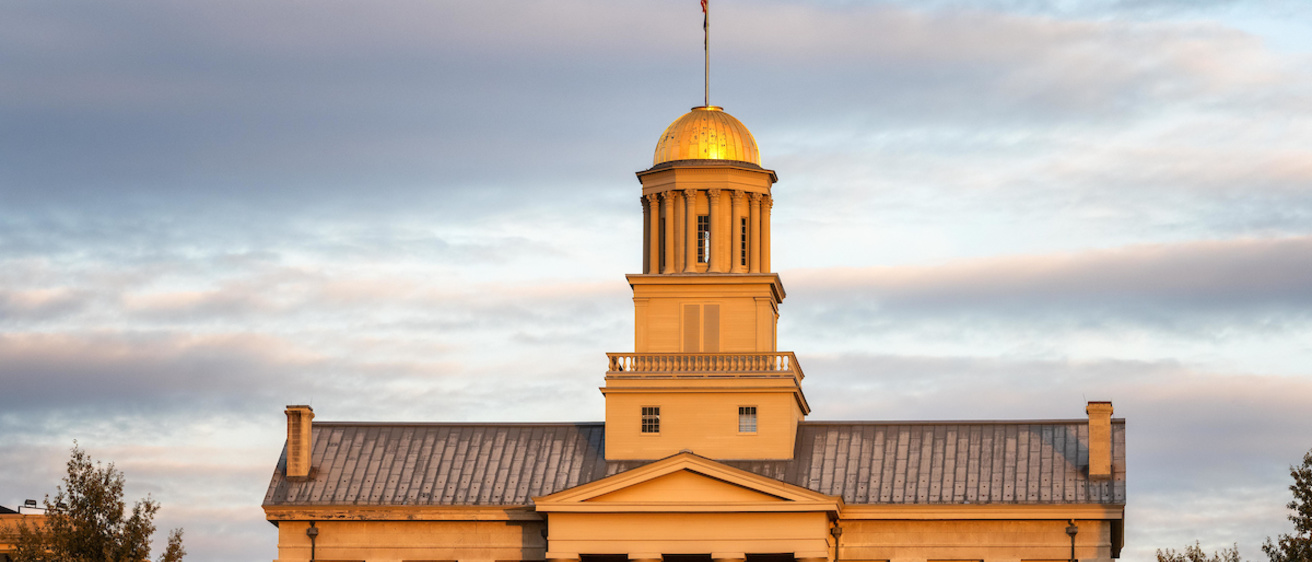After months of study and discussion, the University of Iowa is moving forward with a recommendation to regild the Old Capitol dome. Work is expected to begin this spring and be complete by the start of the fall 2022 semester.
In a study completed by OPN Architects, regilding Old Capitol’s dome was shown to be the most cost-effective and long-term solution to restore the failing gold leaf. It also would require minimal future maintenance, according to the study.
“The Old Capitol is the university’s most iconic building and allocating resources to maintain such a notable and historic landmark is a worthwhile endeavor,” says Rod Lehnertz, senior vice president for finance and operations and university architect.
Total cost of the project is estimated at $725,000.
OPN Architects, which also completed the 2003 gilding and restoration project, examined the state of the gilding, evaluated options for restoring the gilding, and provided recommendations for the restoration. While replacing the metal roof with a pre-finished gold color was considered, it was determined to exceed the project budget and current supply chain issues would have made obtaining materials infeasible.
About Old Cap
Built between 1840 and 1842, the Old Capitol is one of the most recognizable buildings in Iowa. The UI, which was founded in the building on Feb. 25, 1847, will celebrate its 175th anniversary in 2022.
Over its 180 years, the Old Capitol has undergone many renovations.
Between 1921 and 1924, Old Capitol underwent a major structural renovation. The oak supporting beams were replaced with steel beams, one riser was added to the spiral staircase, and the southwest corner of the foundation was repaired.
The 650-pound crystal and brass chandelier that graces the Senate Chamber was installed, and more than 6,400 three-inch square pieces of gold leaf were applied to gild the dome. The west portico, in the original plan but never built, was added in the renovation.
In 1970 the building's six-year historic restoration began, directed by a committee led by Professor Margaret N. Keyes, who conducted scholarly detective work to ensure that the building was returned to its original Greek Revivalist elegance. Keyes and the committee also hoped to capture the essence of Old Capitol's three distinct historical periods: the territorial government period, the state government period, and the university's long and continuing use. Old Capitol reopened to the public on July 3,1976, as a National Historic Landmark.
The restoration project accomplished its goals: to restore the building to reflect its total history and to serve as a "living museum" with some rooms of historical furnishings and exhibits and others providing space for ongoing university functions. Painstaking research has allowed authentic refurnishing of several rooms, some with what might well be original pieces used by state legislators in the 1840s.
Most recently, the dome and cupola were reconstructed after a November 2001 fire. Contractors accidentally started the fire in the cupola while using a heat gun during renovations. The blaze was contained by a firewall built during the 1920s restoration and the ensuing repairs and renovations lasted four and a half years.
The Old Capitol is listed on the National Register of Historic Places and is a National Historic Landmark.
